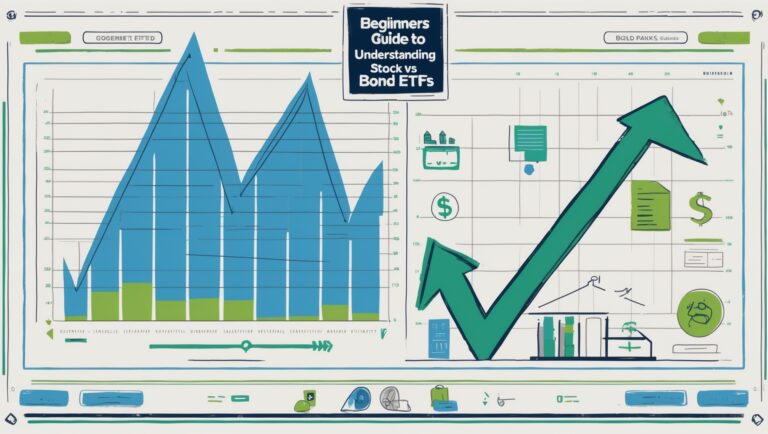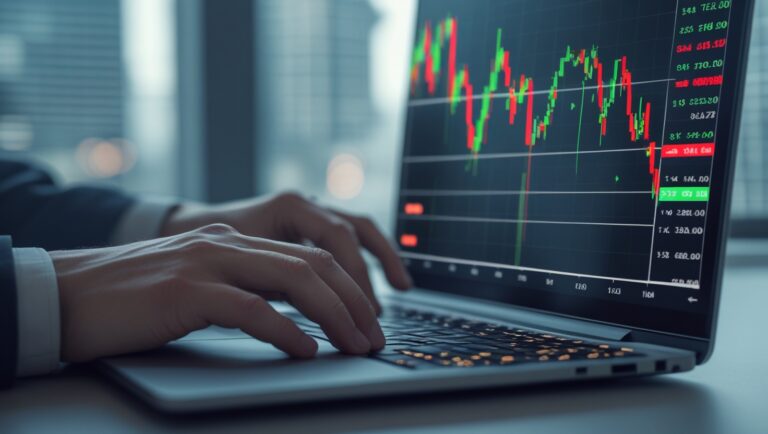How to Start Investing with Just $100
How to Start Investing with Just $100
Ever wondered if you can start investing with just $100? The answer is yes. In this guide, I’ll share how I personally started small, built consistency, and grew my portfolio step by step. You don’t need thousands to begin—you just need a strategy, the right tools, and the discipline to stick with it.

Table of Contents
Why Starting Small Still Matters
When I first began investing, I thought $100 wasn’t enough to make a difference. But over time, I realized that the act of starting was more important than the size of the first investment. That $100 became the seed that taught me discipline and consistency.
The truth is, even a small amount can grow with the power of compound interest, especially if you stay committed over months and years.
Setting Your Mindset Before Investing
I had to shift my mindset from thinking investing was only for the wealthy to understanding that it’s about habits. If I could put $100 into the market today, then I could commit to adding more next month, and the month after that.
That’s how wealth grows—through steady, repeated contributions.
Where to Invest $100
With only $100, I focused on low-cost, diversified investments. Some of my favorite starting points included:
- ETFs (Exchange-Traded Funds): They give instant diversification even with small amounts.
- Index Funds: A long-term option that tracks the overall market.
- Fractional Shares: Many brokerages now allow you to buy small slices of expensive stocks.
Using Robo-Advisors for Simplicity
One of the easiest ways I started was with robo-advisors. With just $100, I could open an account and let algorithms manage diversification for me. It removed the stress of trying to pick stocks on my own.
Automating Contributions
That first $100 was only the beginning. I set up automatic monthly deposits—sometimes only $25 or $50. Over time, those contributions added up, and the habit became second nature.
Why Compound Interest Works in Your Favor
Even with just $100, time is your best ally. Compounding takes small contributions and magnifies them over the years. That’s why I always tell people: don’t wait for the “perfect” amount—start now.
Avoiding High Fees
With small investments, fees matter even more. A $5 monthly fee on a $100 account can eat away at your returns quickly. That’s why I stuck with brokerages offering no-commission trades and low-cost funds.
Diversification Is Still Possible
Even with $100, I didn’t put all my money in one stock. I used ETFs and fractional shares to spread my risk, which gave me peace of mind.
The Psychological Win of Starting
For me, investing $100 wasn’t about becoming rich overnight—it was about building confidence. Once I saw that I could do it, I wanted to add more and stay consistent.
Building Toward Bigger Goals
That first $100 became the stepping stone toward long-term goals like retirement, financial freedom, and eventually paying bills with investment income.
Learning While You Invest
Every dollar I invested taught me something new. I learned how to read financial statements, evaluate ETFs, and understand how my portfolio reacted to market movements—all starting with $100.
Avoiding Common Mistakes
At the start, I almost made the mistake of chasing hype stocks. But I quickly learned that building wealth was about discipline, not gambling. Sticking with diversified, long-term strategies helped me stay consistent.
Turning $100 Into a Habit
The biggest takeaway? That first $100 wasn’t about the amount—it was about starting the journey. Over time, consistent contributions multiplied that money in ways I never expected.
My Recommended Resource
If you want to learn exactly how I grew from small beginnings to building an income-generating portfolio, I break it all down in my ebook: Pay Bills with Stocks. This is the strategy I personally use to turn small investments into consistent wealth-building systems.
✅ By the end of this guide, you can see that $100 is enough to start investing. The key isn’t waiting until you have thousands—it’s about beginning today, building the habit, and letting time and consistency work in your favor.
When I think back to when I first started, I realize the hardest part wasn’t the $100—it was taking action. Too many people hesitate, waiting for the “right time” or “more money.” But in reality, the earlier you start, the more powerful compounding becomes.
Another lesson I learned quickly was that discipline beats luck. With $100, I wasn’t chasing the next big stock or a quick win—I was building habits that paid off long-term.
Even though $100 feels small, it taught me the value of diversification. By spreading that money across ETFs or fractional shares, I reduced my risk while still participating in market growth.
I also began to understand the importance of goal setting. Was I investing that $100 for retirement, a down payment, or simply to learn? Having a clear purpose helped me stick with the plan even when markets got shaky.
What surprised me most was how low the barriers to entry have become. With modern platforms, you can invest $5, $10, or $20 into fractional shares, meaning no stock is out of reach anymore.
Fees were a big concern for me. I made sure to choose platforms that offered zero-commission trades or low-cost ETFs. That way, my $100 went into the market instead of being eaten by costs.
Over time, I realized that even a small account can teach you big lessons. Watching my $100 fluctuate with the market gave me a hands-on education in volatility—something no textbook could provide.
I also learned to appreciate automation. Once I set recurring contributions, investing no longer felt like a chore—it became automatic, just like paying a bill.
Another powerful shift was recognizing the psychological benefits of progress. Seeing my $100 grow to $150 or $200 gave me motivation to keep adding more.
I often tell beginners that starting with $100 is like planting a seed. It may seem small today, but over time, it can grow into a forest of opportunity if you keep watering it with consistent contributions.
One mistake I avoided early was putting all $100 into one hyped-up stock. Instead, I leaned on diversified funds so I wouldn’t lose everything if one company stumbled.
I also discovered the value of financial education alongside investing. While my money was working, I was reading books, listening to podcasts, and learning strategies to maximize returns.
Even if your $100 feels insignificant, it’s about creating momentum. Every dollar added afterward feels easier, and soon you’re building a habit that compounds just like your money.
Looking back, I see that starting with $100 gave me the confidence to increase my contributions. What once felt intimidating became second nature.
Finally, if you’re ready to turn your own $100 into a serious long-term wealth-building journey, I share the exact strategies I personally use in my ebook: Pay Bills with Stocks. This resource is designed to show you how small beginnings can lead to real financial freedom over time.

Stay ahead in the stock market! Subscribe to our newsletter and receive exclusive stock flow reports, trading insights, and actionable tips directly in your inbox. Join thousands of traders who get our updates first.







